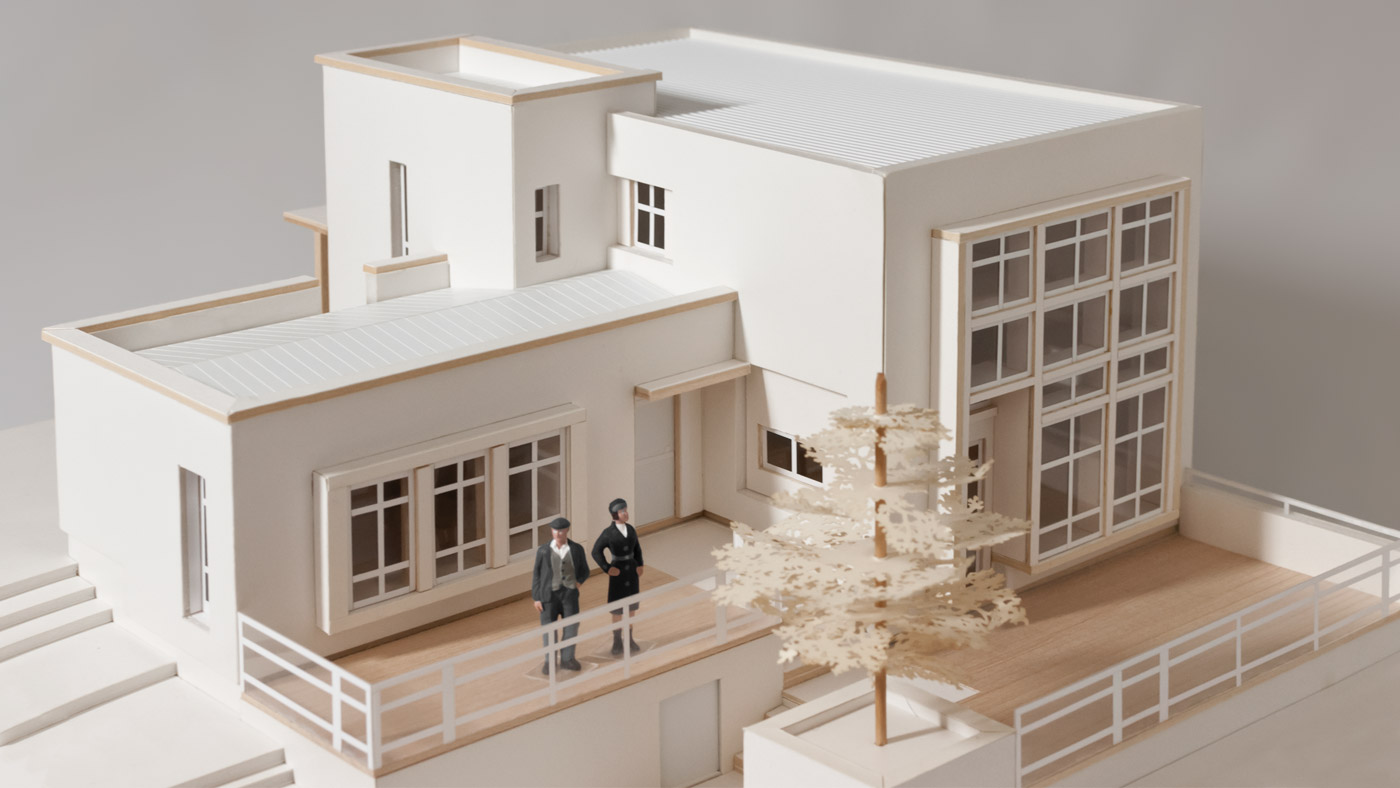Understanding the Presentation Model
Definition and Purpose
The presentation model is a well-crafted, scale replica of a final design that serves as a critical tool for communicating complex ideas visually. It converts abstract concepts into tangible forms, aiding in both explanation and visualization. In architectural fields, for example, a presentation model can represent a structure’s aesthetics, spatial organization, and functional dynamics, thus allowing stakeholders to envision the final product long before it is built.
Essentially, a presentation model bridges the gap between complex designs and stakeholder understanding, making it an invaluable asset in marketing, education, and product development sectors. Whether in digital or physical formats, these models are crafted to enhance audience engagement and comprehension.
Key Characteristics of a Presentation Model
A presentation model possesses distinctive traits that set it apart from other types of models. Firstly, it emphasizes aesthetics over technical detail; the primary goal is to visualize how the final product will look and function. Secondly, it often incorporates interactive elements, allowing audiences to manipulate aspects of the model to better understand the design. Lastly, presentation models are typically tailored to their audience, simplifying complex ideas into foundational visual cues that can resonate effectively.
Comparison with Other Modeling Techniques
When compared with other modeling techniques, such as conceptual models, schematic diagrams, or detailed technical drawings, the presentation model stands out for its visual storytelling capability. While technical drawings may provide precise measurements and materials, they often fail to communicate the emotional response a design may invoke. Conversely, presentation models focus on narrative and experience, utilizing materials, colors, and context strategically to evoke emotion and understanding. They serve as a medium for storytelling, positioning themselves as an essential tool not only in architecture but also in marketing campaigns, exhibitions, and product launches.
Benefits of Using a Presentation Model
Simplifying Complex Ideas
One of the most significant advantages of using a presentation model is its ability to simplify intricate concepts into digestible visuals. By breaking down complex ideas into a coherent visual format, stakeholders can grasp the intent behind a design or proposal efficiently. For instance, consider the architectural process where the intricacies of a commercial building can be effectively conveyed through a scaled model; this allows investors and clients to appreciate spatial relationships and design aesthetics without getting bogged down in technical jargon.
Enhancing Communication with Stakeholders
Effective communication is paramount in any project, and presentation models facilitate dialogue between designers, clients, and other stakeholders. These models serve as a visual anchor during discussions, allowing all parties to engage with the design actively. Rather than interpreting verbal explanations or flat drawings, stakeholders can observe and interact with tangible designs, enabling constructive feedback and collaborative discussions. This enhanced communication can lead to stronger stakeholder buy-in and a shared vision, ultimately leading to more successful projects.
Boosting Engagement and Interest
Presentation models excel not only in conveying information but also in captivating audiences. In environments such as trade shows, exhibitions, or client presentations, the use of an engaging presentation model can significantly enhance interest. For instance, displaying a vibrant, interactive model during a presentation can attract attention and sustain engagement far more effectively than traditional slides or documents. Moreover, interactive elements, such as movable parts or digital interfaces, can create an immersive experience that further captivates and informs stakeholders about the project.
Creating Effective Presentation Models
Selecting Materials and Tools
Building a successful presentation model begins with a careful selection of materials and tools. The choice of materials significantly impacts the model’s aesthetics and functionality. Common materials include foam board, acrylic, wood, and 3D-printed elements, each providing unique attributes regarding durability, weight, and appearance. Moreover, the tools used to create these models—such as CAD software for design, laser cutters for precision, or manual crafting tools for artisanal elements—must align with the final presentation goals. The selected materials and tools should complement the intended message of the presentation, ensuring clarity and visual appeal.
Designing for Clarity and Impact
The design of the presentation model must prioritize clarity and impact. Key aspects to consider include scale, color, and arrangement. A model rendered in a scale that accurately reflects the project while allowing viewers to understand its context is crucial. Color usage can be leveraged to evoke emotions or highlight important features. Additionally, 3D models can be arranged to emphasize specific areas, allowing viewers to perceive focal points clearly. Effective use of lighting can also enhance model visibility and aesthetics, drawing attention to vital details that need emphasis.
Common Mistakes to Avoid
While creating presentation models offers numerous benefits, several common pitfalls should be addressed to ensure success. A frequent mistake is overcomplicating the model with too much detail, which can overwhelm viewers and dilute key messages. Additionally, failing to consider the target audience can result in misalignment; for instance, a highly technical model may be inappropriate for a lay audience. Moreover, neglecting to test the model for functionality, especially if it includes interactive elements, can lead to disastrous presentations. Lastly, ensuring adequate preparation and rehearsals can make a significant difference, as they help presenters engage with their models confidently and effectively.
Case Studies of Successful Presentation Models
Architectural Projects Using Presentation Models
Consider the case of a prominent architectural firm that utilized presentation models to win a competitive bid for a large urban redevelopment project. They created a detailed, interactive model that allowed city council members and stakeholders to visualize the proposed design’s impact on the urban landscape. The model not only illustrated the aesthetic aspects but also provided insight into traffic flow, pedestrian pathways, and green spaces, which significantly helped communicate the design intent. As a result, the firm secured the project, evidencing how effective models can influence decision-making.
Corporate Presentations That Captivated Audiences
In the corporate world, innovative presentation models have reshaped how companies approach product launches. For example, a technology company showcased their latest smartphone prototype at a launch event using a dramatic presentation model that demonstrated the device’s features in a real-world context. By allowing audiences to interact with the model, grasping the ergonomics and functional aspects at once, the presentation became a momentous success, generating significant media coverage and consumer excitement. This case highlights how effective presentation models can create memorable experiences that resonate with the target audience.
Comparative Impact: Physical vs. Digital Models
As technology advances, the debate between physical and digital presentation models continues. A recent architectural competition showcased both methods, with one team presenting a physical model and another using a virtual reality (VR)-based digital model. While the physical model evoked tactile engagement and immediate visual impressions, the digital model offered dynamic details, allowing for immersive exploration of the design. Ultimately, both methods garnered accolades, demonstrating that the choice between physical and digital models should align with audience preferences and project objectives. Understanding the unique strengths of each approach is critical for maximizing impact.
Future Trends in Presentation Modeling
Innovations in Digital Presentation Models
The future of presentation models is leaning heavily towards digital innovation, particularly with advancements in virtual and augmented reality (AR) technologies. These innovations allow audiences to experience designs in a more immersive environment, transcending the limitations of physical models. For example, architects can create augmented reality applications that let clients visualize changes to their projects in real-time within their own spaces, effectively bridging the gap between design and experience. This shift to digital presentation promises not only greater engagement but also enhanced collaboration and iterative design processes.
Integration of Virtual Reality in Presentation
Through virtual reality, presentation models can portray designs not just visually, but also spatially, allowing users to ‘walk through’ and interact with the digital environment. This capability provides stakeholders with an experience that traditional models cannot match—enabling them to assess spatial relationships, materials, and even lighting conditions in a virtual space. As VR technology becomes more accessible, we can expect a growing reliance on VR presentations in architecture, real estate, and product design.
Sustainability Considerations in Model Creation
As sustainability becomes a crucial focus in all industries, presentation modeling is also undergoing change. Companies are increasingly adopting eco-friendly materials for physical models and utilizing digital methods to reduce waste. For instance, instead of traditional foam or plastic, designers might opt for sustainable biocomposite materials or recycled cardboard, thus reducing the environmental footprint of their models. Furthermore, with the shift towards digital presentation, stakeholders can explore advanced features such as energy simulations or green technology implementations directly through their models, providing a comprehensive view of sustainability in design.



